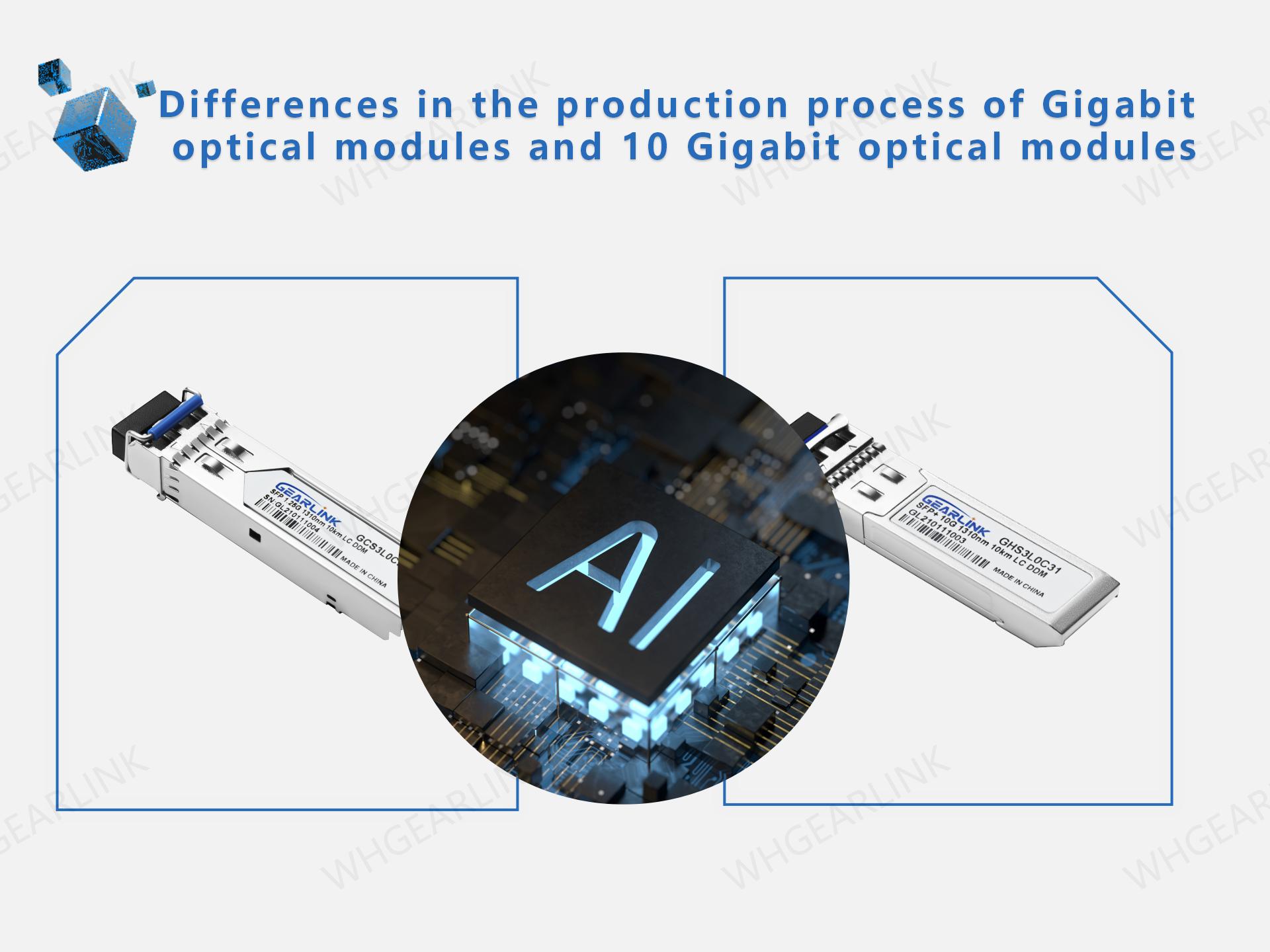Gigabit optical transceivers and 10 Gigabit optical transceivers are important components in the field of modern communications, and their production processes are also quite critical. This article will understand the manufacturing process and key technologies of optical transceivers by analyzing the differences in the production process of Gigabit optical transceivers and 10 Gigabit optical transceivers, and provide readers with in-depth optical transceiver knowledge and application guidance.
Gigabit optical transceivers and 10 Gigabit optical transceivers are currently two types of optical transceivers commonly used in the field of optical communications to support different transmission rate requirements. Although their functions are similar, there are some differences in the production process. This article will focus on the differences in the production process of Gigabit optical transceivers and 10 Gigabit optical transceivers, as well as their differences.
The production process of gigabit optical transceivers is relatively mature. Due to its low transfer rate, its production process is relatively simple. The main manufacturing steps include chip testing and screening, assembly of optical components, transceiver packaging and testing, etc. Chip processing is the core link of optical transceiver production, which is to process the chip into a size and structure suitable for optical transceivers. During chip processing, micron-level nanotechnology processing and testing equipment is required to ensure the accuracy and stability of chip processing. In the transceiver assembly stage, chips and optical components need to be assembled on the carrier, packaged and soldered to make it a complete optical transceiver component. Finally, testing and debugging are required to ensure that the quality and performance of the optical transceivers are up to standard. Generally speaking, the assembly and process of gigabit optical transceivers are more standardized, so their production process is relatively stable and the cost is relatively low.
In contrast, the production process of 10 Gigabit optical transceivers is more complicated. Due to its high transmission rate, it requires higher components and technology. The manufacturing steps of 10 Gigabit optical transceivers include the preparation of high-precision components, strict debugging and calibration of optical devices, design and wiring of high-speed circuits, etc. These steps are relatively complex and require more specialized knowledge and skills. In addition, the manufacturing process of 10 Gigabit optical transceivers requires higher testing and verification standards to ensure their transmission quality and reliability. In the manufacturing process, the following links need to be paid attention to:
The first is the design of a high-speed logic chip, which needs to meet the requirements of high-speed communication, and also needs to have high power consumption and thermal design. In the chip design process, higher-level processes and processes need to be used.
The second is optical components and design. This link needs to pay more attention to the influence of optical items and electrical parameters. At the same time, electrical characteristics such as circuit layout and interference need to be considered in the design process.
Finally, it is testing and debugging. This link needs to detect the performance and reliability of the 10G optical transceiver to ensure the quality and output of the optical transceiver.
To sum up, there are certain differences in the production process between Gigabit optical transceivers and 10 Gigabit optical transceivers. The production process of Gigabit optical transceivers is relatively simple and mature, while the production process of 10 Gigabit optical transceivers is more complicated. Due to the difference in transmission rate and technical requirements, the production process of 10 Gigabit optical transceivers is more refined and the cost is relatively high. These differences will also be reflected in the performance, transmission distance and cost of optical transceivers. The production process of Gigabit optical transceivers and 10 Gigabit optical transceivers is an important link in the manufacturing of optical transceivers, we need to pay attention to and have an in-depth understanding of related technologies and knowledge. At the same time, manufacturers also need to improve production efficiency and enhance product performance through continuous technological improvement and innovation, so as to provide users with better optical transceiver products.


